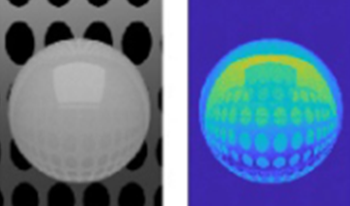References
1
2BeckJ.IvryR.1988On the role of figural organization perceptual transparencyPerception & Psychophysics44585594585–9410.3758/BF03207492
3BernsR. S.AlmanD. H.ReniffL.SnyderG. D.Balonon-RosenM. R.1991Visual determination of suprathreshold color-difference tolerances using probit analysisColor Res. Appl.16297316297–31610.1002/col.5080160505
4BlumH.A transformation for extracting new descriptors of shapeModels for the Perception of Speech and Visual Form1967MIT PressCambridge, MA362380362–80
5BruntonA.ArikanC. A.TanksaleT. M.UrbanP.20183D printing spatially varying color and translucencyACM Trans. Graph.37157:1157:13157:1–157:1310.1145/3197517.3201349
6ChadwickA.HeywoodC.SmithsonH.KentridgeR.2019Translucence perception is not dependent on cortical areas critical for processing colour or textureNeuropsychologia128209214209–1410.1016/j.neuropsychologia.2017.11.009
7ChadwickA. C.CoxG.SmithsonH. E.KentridgeR. W.2018Beyond scattering and absorption: Perceptual unmixing of translucent liquidsJ. Vis.181151–1510.1167/18.11.18
8
9CunninghamD. W.WallravenC.FlemingR. W.StraßerW.Perceptual reparameterization of material propertiesComputational Aesthetics2007Eurographics Digital LibraryGeneva, Switzerland899689–96
10EngeldrumP. G.Psychometric Scaling: A Toolkit for Imaging Systems Development2000ImcotekWinchester, MA
11EugèneC.Measurement of “total visual appearance”: A CIE challenge of soft metrology12th IMEKO TC1 and TC7 Joint Symposium on Man, Science and Measurement2008Curran AssociatesRed Hook, NY616561–5
12FlemingR. W.BülthoffH. H.2005Low-level image cues in the perception of translucent materialsACM Trans. Appl. Perception2346382346–8210.1145/1077399.1077409
13FlemingR. W.JäkelF.MaloneyL. T.2011Visual perception of thick transparent materialsPsychological Sci.22812820812–2010.1177/0956797611408734
14GigilashviliD.DubouchetL.PedersenM.HardebergJ. Y.
15GigilashviliD.
16GigilashviliD.UrbanP.ThomasJ. B.PedersenM.HardebergJ. Y.
17GigilashviliD.MirjaliliF.HardebergJ. Y.
18GigilashviliD.ThomasJ.-B.HardebergJ. Y.PedersenM.
19GigilashviliD.ThomasJ. B.HardebergJ. Y.PedersenM.On the nature of perceptual translucency8th Annual Workshop on Material Appearance Modeling (MAM 2020)2020Eurographics Digital LibraryGeneva, Switzerland172017–20
20GigilashviliD.ThomasJ.-B.HardebergJ. Y.PedersenM.2021Translucency perception: A reviewJ. Vis.211411–41
21GigilashviliD.UrbanP.ThomasJ.HardebergJ. Y.PedersenM.
22GkioulekasI.WalterB.AdelsonE. H.BalaK.ZicklerT.
23GkioulekasI.XiaoB.ZhaoS.AdelsonE. H.ZicklerT.BalaK.2013Understanding the role of phase function in translucent appearanceACM Trans. Graph.321191–1910.1145/2516971.2516972
24GuanS.-S.LuoM. R.1999Investigation of parametric effects using small colour differencesColor Res. Appl.24331343331–4310.1002/(SICI)1520-6378(199910)24:5¡331::AID-COL5¿3.0.CO;2-9
25JakobW.
26KoenderinkJ. J.van DoornA. J.2001Shading in the case of translucent objectsSPIE4299312320312–2010.1117/12.429502
27LuoM. R.CuiG.RiggB.2001The development of the CIE 2000 colour-difference formula: CIEDE2000Color Res. Appl.26340350340–5010.1038/scientificamerican0474-90
28MarlowP. J.KimJ.AndersonB. L.
29MetelliF.1974The perception of transparencySci. Am.230909990–910.1068/i0576
30MotoyoshiI.2010Highlight–shading relationship as a cue for the perception of translucent and transparent materialsJ. Vis.101111–1110.1016/S0042-6989(01)00173-0
31NagaiT.OnoY.TaniY.KoidaK.KitazakiM.NakauchiS.2013Image regions contributing to perceptual translucency: A psychophysical reverse-correlation studyi-Perception4407428407–28
32PizloZ.2001Perception viewed as an inverse problemVis. Res.41314531613145–61
33RebainD.AnglesB.ValentinJ.ViningN.PeethambaranJ.IzadiS.TagliasacchiA.
34SawayamaM.DobashiY.OkabeM.HosokawaK.KoumuraT.SaarelaT.OlkkonenM.NishidaS.
35SinghM.AndersonB. L.2002Perceptual assignment of opacity to translucent surfaces: The role of image blurPerception31531552531–52
36
37StevensS. S.1960The psychophysics of sensory functionAm. Sci.48226253226–5310.1145/3319910
38UrbanP.FedutinaM.LissnerI.2011Analyzing small suprathreshold differences of LCD-generated colorsJOSA A28150015121500–1210.2352/ISSN.2169-2629.2017.32.94
39UrbanP.TanksaleT. M.BruntonA.VuB. M.NakauchiS.2019Redefining A in RGBA: Towards a standard for graphical 3D printingACM Trans. Graph.381141–14
40VuB. M.UrbanP.TanksaleT. M.NakauchiS.
41XiaoB.WalterB.GkioulekasI.ZicklerT.AdelsonE.BalaK.2014Looking against the light: How perception of translucency depends on lighting directionJ. Vis.141221–22
42XiaoB.ZhaoS.GkioulekasI.BiW.BalaK.2020Effect of geometric sharpness on translucent material perceptionJ. Vis.20:71171–17

 Find this author on Google Scholar
Find this author on Google Scholar Find this author on PubMed
Find this author on PubMed